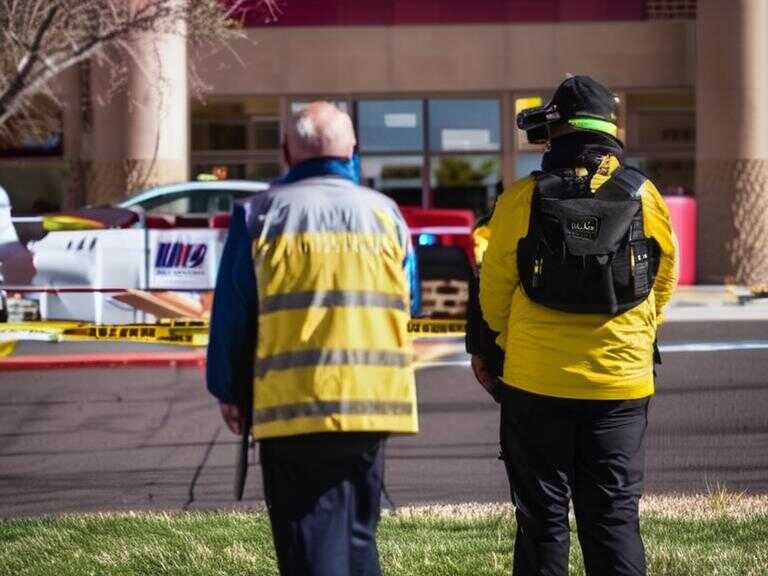
Contaminated Candy Scare: Auckland Charity Distributes Methamphetamine-Laced Sweets in Food Parcels
Auckland charity unknowingly distributed methamphetamine-filled candies. Police investigation launched as 400 parcels traced; no severe health impact reported.

In an alarming incident that has sent shockwaves through the city, a charity in Auckland, New Zealand, was unwittingly distributing candies laced with deadly methamphetamine to individuals in need. The situation came to light when Auckland City Mission announced that it had received donations of seemingly innocent candies, which upon testing, were found to contain potentially lethal amounts of the highly addictive substance. This shocking revelation has sparked a criminal investigation by New Zealand authorities, and has left the affected families and the community reeling.
The Discovery and Response
Auckland City Mission (ACM), a charity organization that provides support to homeless individuals and families, found itself at the center of a disturbing discovery. The staff reported that they had received donations of what appeared to be ordinary candies, but further testing revealed a horrifying truth – the sweets were like solid blocks of methamphetamine, cleverly disguised in colorful candy wrappers. The charity estimated that the contaminated candies may have been distributed to as many as 400 individuals, raising concerns about the potential widespread consequences.
The shocking nature of the discovery prompted immediate action from the charity's staff. They promptly initiated contact with the recipients of the possibly tainted food parcels, aiming to track down the affected individuals and provide them with vital information. In response to the alarming situation, New Zealand's police have launched a criminal investigation to determine the source of the contaminated candies and the circumstances surrounding the donation.
The Dangers of the Contaminated Candies
The New Zealand Drug Foundation , an organization focused on drug policy and harm reduction, confirmed the severity of the situation. According to their spokesperson, Ben Birks Ang, the amount of methamphetamine present in each candy was reportedly up to 300 times the typical recreational dose, posing a lethal risk to those who ingested even a small portion of the contaminated confectionery.
In a shocking revelation, it was disclosed that the candies had a high street value of NZ$ 1,000 (approximately $608) per piece, raising suspicions about the origin and intent behind the donation. Furthermore, it was revealed that some of the recipients of the tainted food parcels were clients of the charity's addiction service. Given the sensitive nature of this population, the distribution of the contaminated candies has understandably caused significant distress and concern among both the affected individuals and the charity's staff.
The City Missioner, Helen Robinson, expressed the charity's deep sorrow and dismay at the turn of events, stating, "To say that we are devastated is an understatement." In the organization's efforts to provide assistance and support to the vulnerable members of the community, the discovery of methamphetamine-laced candies being inadvertently distributed has dealt a severe blow and left them reeling from disbelief.
Calls for Vigilance and Accountability
The incident has underscored the pressing need for vigilance and accountability within charity organizations, particularly when it comes to accepting donations of consumables. The City Missioner emphasized that the charity's food bank only accepts commercially produced food items in sealed packaging, making the disguised nature of the contaminated candies all the more concerning. Helen Robinson revealed that the poisonous candies were donated in a retail-sized bag, bearing the label of a Malaysian candy brand, Rinda, which at first appeared to comply with the charity's stringent donation policies.
Despite the immediate measures taken by the charity to address the situation and prevent further harm, the incident has raised questions about the adequacy of existing protocols for preventing similar occurrences in the future. The charity's prompt tasting of the candies, followed by swift communication with the authorities, demonstrates their commitment to ensuring the safety and well-being of those they serve. However, the incident highlights the need for increased vigilance and thoroughness in screening donations to prevent a recurrence of this disturbing episode.
The potential for hidden dangers within seemingly innocuous goods serves as a sobering reminder of the challenges faced by charitable organizations in safeguarding the welfare of their beneficiaries. In light of this incident, it is imperative for organizations to bolster their procedures for evaluating donations, while remaining mindful of the potential risks associated with accepting items from unknown sources.
A Community in Shock and Resilience
The revelation of candies containing lethally high doses of methamphetamine being distributed to vulnerable members of the community has left Auckland in shock. The affected families, some of whom reportedly consumed the contaminated sweets, have understandably been distressed by the ordeal they unwittingly endured. Fortunately, no hospitalizations have been reported, as the unpalatable taste of the candies led most individuals to immediately reject and discard them.
Amid the disconcerting circumstances, the community has demonstrated resilience and solidarity in the face of adversity. The swift response from the Auckland City Mission staff, in conjunction with the criminal investigation initiated by the police, underscores the collective determination to address the situation and prevent further harm to members of the community.
A Call for Transparency and Reevaluation
As the investigation into the origins and circumstances of the donation continues, the need for transparency and accountability has come to the forefront. The community at large, along with the charity organizations involved, are eager to understand how such a grave oversight could occur, and what measures will be implemented to prevent a recurrence.
As authorities delve deeper into the investigation, there is a growing demand for a thorough reevaluation of the protocols and practices governing donations to charitable organizations. Ensuring the safety and welfare of beneficiaries should remain of utmost priority, and it is essential that stringent safeguards are put in place to mitigate the risks associated with accepting donated items
The presence of cleverly disguised methamphetamine-laced candies within seemingly harmless food parcels serves as a stark reminder of the challenges faced by charitable organizations in safeguarding the well-being of their beneficiaries. The incident has prompted a collective call for vigilance, accountability, and transparency within the charitable sector, as well as a reevaluation of existing donation screening protocols.
As the affected community grapples with the shock and distress caused by this troubling episode, the resilience and solidarity displayed by both the charity organizations and the residents of Auckland highlights the strength of the human spirit in the face of adversity. With the commitment to learning from this experience and ensuring the safety of those they serve, the community and its charitable organizations can emerge from this distressing chapter with renewed resolve and dedication to their mission.
Share news















